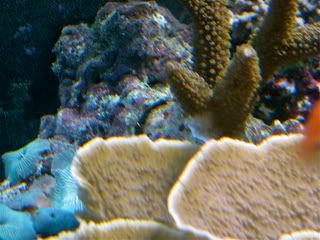
 |
|
#1
|
|||||
|
|||||
|
I've had this acro for about 4 weeks. There isn't any color to it yet, if it were to color up I think it would be a nice blue. A small patch of white on the lower left corner has appeared and it's slowly getting bigger. Is there anything I can do or will this coral just slowly die? There is good polyp extension throughout the rest of the coral though.
Thanks for any help  |
|
#2
|
|||||
|
|||||
|
Time to frag it. Leave some of the live tissue on the base when you cut it.
|
|
#3
|
|||||
|
|||||
|
I've never fragged something like this, what do I use to cut it?
|
|
#4
|
|||||
|
|||||
|
i use wire snips, they give a nice flat edge so it's easy to glue afterwards
__________________
33g fowlr / 20g sump / 400 watt pendant / Euro-Reef RC80~~~~lavendar tang, lemon butterfly, snowflake eel, hawaiian spotted puffer, tomato clown, chomis.. My reef~http://i297.photobucket.com/albums/m...-/P4300459.jpg |
|
#5
|
|||||
|
|||||
|
Quote:
__________________
180 starfire front, LPS, millipora Doesn't matter how much you have been reading until you take the plunge. You don't know as much as you think. |
|
#6
|
|||||
|
|||||
|
before fragging it you can try applying some superglue to the base, sometimes this stops STN and RTN.
__________________
I'm out. 
|
|
#7
|
|||||
|
|||||
|
suggesting covering the white area in super glue?
|
|
#8
|
|||||
|
|||||
|
correct, and overlap the healthy tissue which is not recessing just a little bit in hopes that the glue will stopp the progress
__________________
I'm out. 
|
|
#9
|
|||||
|
|||||
|
I will try this out tonight, I'd much rather save the whole colony rather than frag it.
Thanks! |
|
#10
|
|||||
|
|||||
|
When an acro RTN's does the tissue actually slough off and is it always botton up. When an acro "bleaches" does it slough tissue off too. I guess what I am asking is what's the initial difference. How can I tell if RTNing or just bleachinig?
|